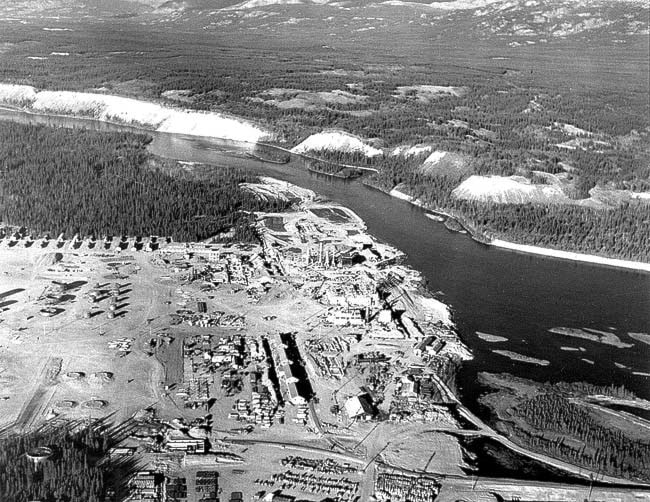The Marwell tar pit cleanup is going ahead, but precisely what nasties are being removed from the area isn’t clear.
That, and many other questions remain unanswered after federal and territorial officials announced they were going to rid the territory of its largest hydrocarbon contamination site.
The project will create jobs, improve groundwater quality by removing contaminants and be better for the environment overall, said Environment Minister John Edzerza.
“The Marwell tar pit remediation agreement will make it possible to remove an environmental hazard that has long been a concern to Yukoners.”
However, he was unable to elaborate on the nature of the contaminants, what dangers they posed or even how many jobs the project would bring.
He also couldn’t say why it has taken so long for the site to be cleaned.
“No one wants to own it,” Edzerza joked. “I really don’t have an answer to that.”
Imperial Oil abandoned the site in 1947 after taking down an oil refinery used during the Second World War.
The oil-soaked property was transferred to the Yukon government in 1972, said Brett Hartshorne, chair of the Yukon Contaminants Committee.
More than 60 years after the refinery was dismantled, the site remains untouched. A fence surrounds the site, which is roughly the size of 12 football fields. That’s 2,700 dump truck loads of contaminated soil, said Marie-Louise Boylan, senior communications officer for Indian and Northern Affairs Canada.
The site is contained so the contaminants have not caused any problems, said Hartshorne. But it is very possible they will eventually leak from the site, and can be hazardous to plants, animals and, in extreme cases, people.
So the project is a preemptive measure.
But no one wanted to be responsible for the pit.
“It’s a very complex issue,” said Joanne Wilkinson, regional director general for Indian and Northern Affairs.
The project has a complicated history, said Edzerza, “one that made it hard for one government to act.”
It is now on the Yukon government’s land as well as the Kwanlin Dun First Nation’s traditional territory.
In January, Yukon’s Environment Department planned to clean the site, but were waiting to hear from Ottawa who would fund the project.
The finalized deal will see Ottawa funding 70 per cent of the project and Yukon, who will lead the project, funding 30 per cent. The project is expected to cost $6.8 million.
The announcement to clean the site came before any concrete plans had been made.
But the planning phase will begin immediately, said Wilkinson. The government is still in the process of hiring a project manager, which is part of phase one.
This step, expected to take up to five years, will develop a remediation plan by considering different options, determine costs, consult with the Ta’an Kwach’an Council and the Kwanlin Dun First Nation, create an environmental assessment of the plan and speak with the area’s residents.
Phase two will be the remediation stage. This will focus on the removal and treatment of contaminants and is expected to take two years.
Finally, the post-remediation phase will monitor the groundwater and re-vegetation of the site and will last four years until 2020/2021.
Wilkinson said the project is “the right thing to do and demonstrates environmental stewardship.
“Canada and Yukon have agreed to fund the project to ensure the health and safety of northerners.”
Contact Larissa Robyn Johnston
at larissaj@yukon-news.com
